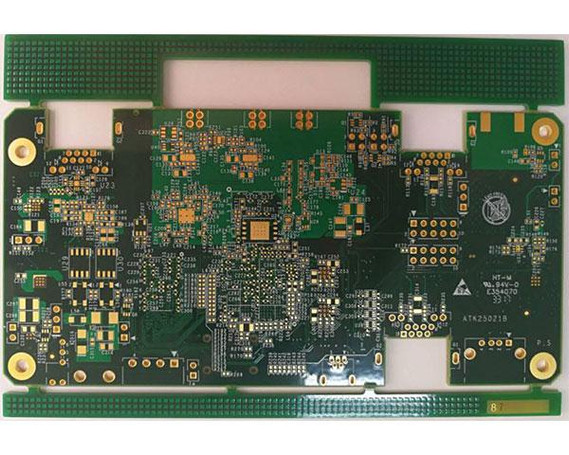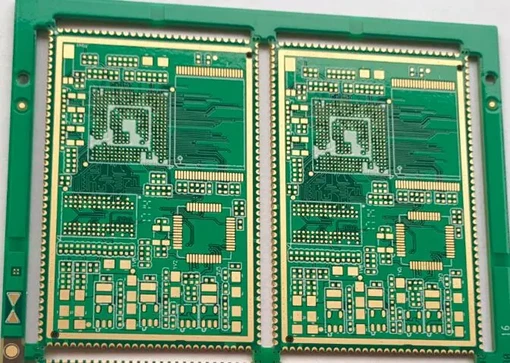Hitech Circuits Co., Limited is a PCB manufacturer in China with a long standing tradition of quality and excellence. One of our subsidiary focuses on all of kinds of metal base printed circuit boards, such as: Aluminum PCB, Copper Based PCB, Ceramic PCB, Metal Core PCB, Iron Based PCB, IMS MCPCB, COB Mirror Aluminum PCB, High Power LED PCB, Thermoelectric Separation of Copper Based PCB and High Thermal Conductivity MPCB, etc. at a low cost and with a quick turn lead time.
We have over 10 years contract electronic manufacturing experience and the production PCB Which are used in consumer electronics, LED lighting, telecommunication, computer application, industrial control, automobile, military, etc. We can meet all your Metal Core PCB & Rigid PCB manufacturing needs from single-sided to complex multi-layered metal clad substrate PCB's and from prototype through production.
PCB Fabrication
PCB Fabrication, China PCB Circuit Board Manufacturing
As a leading China PCB manufacturer, Hitech Circuits has rich experience and extensive expertise, from PCB layout & design, and PCB manufacturing to PCB testing and after-sales, all processes are finished in our ISO-certified factory. We put quality as the first priority, each circuit board goes through a strict quality control process before delivery. We specialize in producing all kinds of printed circuit boards, including PCB prototypes, FR4 PCB, Double-sided PCB, Aluminum PCB, RF PCB, Ceramic PCB, High-Frequency PCB, HDI PCB, etc. If you are looking for a reliable PCB board manufacturer in China, please don’t heisitate to contact: sales@hitechcircuits.com

What is a Printed Circuit Board (PCB)?
PCB or Printed Circuit Board is the traditional name for the bare board of which we produce with the layout data and which will be used to mount the components on.
A printed circuit board, or PCB, is used to mechanically support and electrically connect electronic components using conductive pathways, tracks or signal traces etched from copper sheets laminated onto a non-conductive substrate.Components are generally soldered onto the PCB to both electrically connect and mechanically fasten them to it.
When the board has only copper tracks and features, and no circuit elements such as capacitors, resistors or active devices have been manufactured into the actual substrate of the board, it is more correctly referred to as printed wiring board (PWB) or etched wiring board.
PCBs can be single-sided (one copper layer), double-sided (two copper layers on both sides of one substrate layer), or multi-layer (outer and inner layers of copper, alternating with layers of substrate). Multi-layer PCBs allow for much higher component density, because circuit traces on the inner layers would otherwise take up surface space between components. The rise in popularity of multilayer PCBs with more than two, and especially with more than four, copper planes was concurrent with the adoption of surface mount technology. However, multilayer PCBs make repair, analysis, and field modification of circuits much more difficult and usually impractical.
Use of the term PWB or printed wiring board although more accurate and distinct from what would be known as a true printed circuit board, has generally fallen by the wayside for many people as the distinction between circuit and wiring has become blurred.
Today printed wiring (circuit) boards are used in virtually all but the simplest commercially produced electronic devices, and allow fully automated assembly processes that were not possible or practical in earlier era tag type circuit assembly processes.

Advantages of PCBs
PCBs (printed circuit boards) have, more or less, become a very vital part of modern electronic equipment. In fact, if you were to disintegrate any electronic equipment in your house, the chances are that you are going to come face to face with one of myriad types of PCBs. A basic printed circuit board is comprised of a very large number of passive and active components. They are connected from side to side with traces on the board. It is wholly possible to develop very large circuits on small printed circuits boards with the availability of very small sized electronic components.
But that is not all PCBs are good for. Printed circuit board offer varied advantages which make them the perfect choice for the PCB board manufacturers of electronic components, instruments and equipment everywhere.
Keep on reading to find out what they are.
Compact Size
A characteristic PCB includes a large number of electronic components. Most of these components are very small in size. It would be close to impossible to connect these components together with wires without the aid of printed circuit boards. A typical printed circuit board offers a simple platform to align the electronic components in a compressed and efficient way. This compactness allows creation of big and complicated electronic circuits in small form factors. This, in turn, takes less space in devices.
Ease in Repair and Diagnostic
One great thing about printed circuit boards is that they are helpful in performing diagnostics for a number of reasons. The electronic parts and their polarities on a properly designed printed circuit boards are evidently labeled on the board. This allows convenience during the installation process as well as repair process. Signal paths are often traced during diagnostics. Doing this would be wholly difficult to perform if the traces were not clear to the view and well organized.
Immune to Movement
Another worthwhile thing to notice is that all the components on a PCB are held fixed to the board. This is done by solder flux which does not allow them to move irrespective of the movement of the board itself. Because of this, the electronic circuit (that move or shake) can be placed in devices without worrying about the possibility of displacement of the electronic components and any subsequent electronic short circuits.
Low Electronic Noise
A printed circuit board (that has been properly laid out) lessens electronics noise. If it is not laid out properly then the noise could significantly degrade performance. The electrical components on a printed circuit board are organized in a way that the path lengths of the electrical current between them are lessens. This leads to low radiation and pickup of electromagnetic waves, thus ensuring lower cross talk in between components and in between varied traces, which usually is a major concern in electronic circuits.
Types of Printed Circuit Boards
PCB board fabrication are integral parts of all electronic devices, ranging from simple digital wrist watches and handheld games, to highly complicated satellite systems. PCB are manufactured in several ways to meet the unique requirements of varied industries. They can be fabricated in single sided, double sided, and multi-layered configurations as per the demands.
If you are a first time customer, it is important that you must have a clear understanding on the basic types of PCB.
https://www.hitechpcba.com/pcb-fabrication
